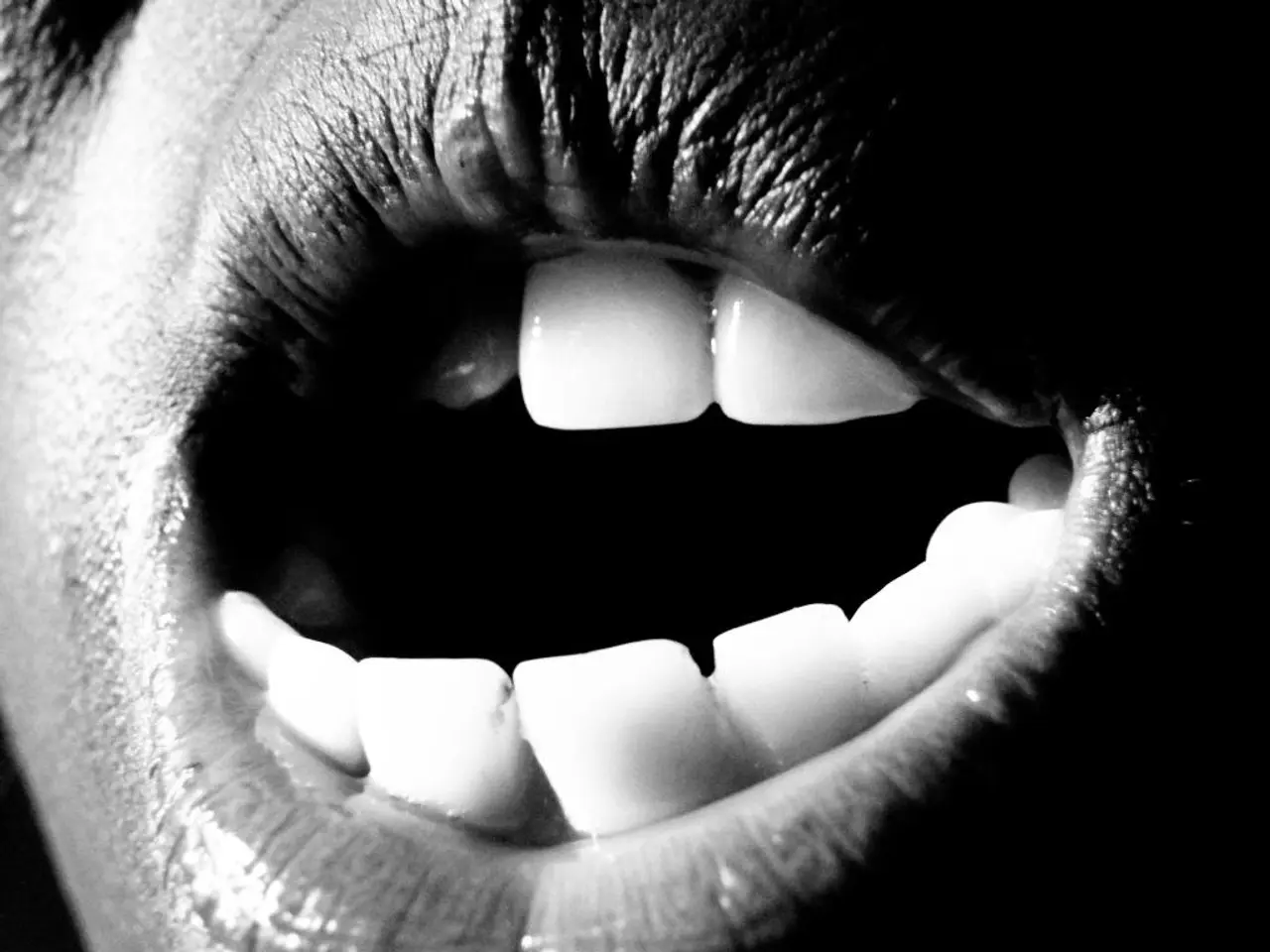Adjusting a Misaligned Jaw: A Guide
In a world where appearances can matter, one man's journey to self-acceptance sheds light on the long-term effects of a common condition known as bruxism, or teeth grinding. For privacy reasons, our subject, Ethan, has asked that his last name not be shared.
Ethan, a 37-year-old individual, had always been self-conscious about his appearance, particularly disliking pictures taken straight on. It wasn't until he reached his mid-thirties that he realised the cause of his crooked jaw: a larger masseter muscle on his right side, a response to years of teeth grinding triggered by stress.
Teeth grinding is a common occurrence, often a result of stress, although the specific stressors are not always specified. Ethan's case is a prime example of how this seemingly innocuous habit can have far-reaching effects on one's facial structure.
Chronic bruxism can lead to jaw muscle hypertrophy, enlarging certain muscles and giving a square or bulky jawline. Over time, it can also cause facial structural changes, such as a sunken appearance due to worn, shorter teeth. The repetitive muscle activity and clenching contribute to muscle tenderness and stiffness, further disturbing facial muscle balance and function.
Moreover, bruxism can cause muscle imbalance, with some facial muscles enlarging to compensate for changes in teeth and jaw, leading to altered overall facial aesthetics. In extreme cases, it can even cause joint problems and damage the temporomandibular joint, affecting facial movement and structure.
Ethan's jaw issue affected his confidence in relationships and was a source of discomfort. However, he is not alone in his experience. Dr. Jeremy Manuele, a board-certified orthodontist, confirms that many people experience similar jaw issues due to teeth grinding.
The rise of social media has also contributed to an increase in awareness of one's appearance. This awareness, coupled with societal perceptions, links a prominent jawline with attractiveness and perceptions of masculinity. As a result, more men are seeking out plastic surgery, including procedures that aim to give them the jaws of celebrities like Brad Pitt, Henry Cavill, or Jacob Elordi.
However, non-surgical interventions such as custom mouth guards and muscle therapy can help manage and prevent the progression of these changes. Surgery is a last resort for severe joint destruction. In Ethan's case, working with an ENT to improve airflow helped make a difference in his jawline and overall health.
In conclusion, understanding the long-term effects of bruxism on facial aesthetics is crucial for early diagnosis and treatment. By being aware of the signs and seeking help, individuals like Ethan can take steps towards self-acceptance and improved quality of life.
- In his quest for self-acceptance, Ethan discovered that his lifelong discomfort with his facial appearance could be attributed to bruxism, a condition characterized by teeth grinding.
- The science behind bruxism reveals that chronic teeth grinding can lead to muscular imbalances, facial structural changes, and even joint problems if left untreated.
- Aware of the impact of appearances in society, many individuals turned to health-and-wellness shops for solutions, including custom mouth guards and muscle therapy, to manage bruxism and prevent further changes to their facial structures.
- The fashion world has also been influenced by the idealized square jawlines associated with attractiveness and masculinity, leading some men to pursue sports-analysis and fitness-and-exercise regimens to sculpt their facial features.
- Mental health professionals emphasize the significance of addressing the root causes of stress and anxiety, as mental wellness plays a crucial role in managing bruxism and maintaining a balanced lifestyle.




